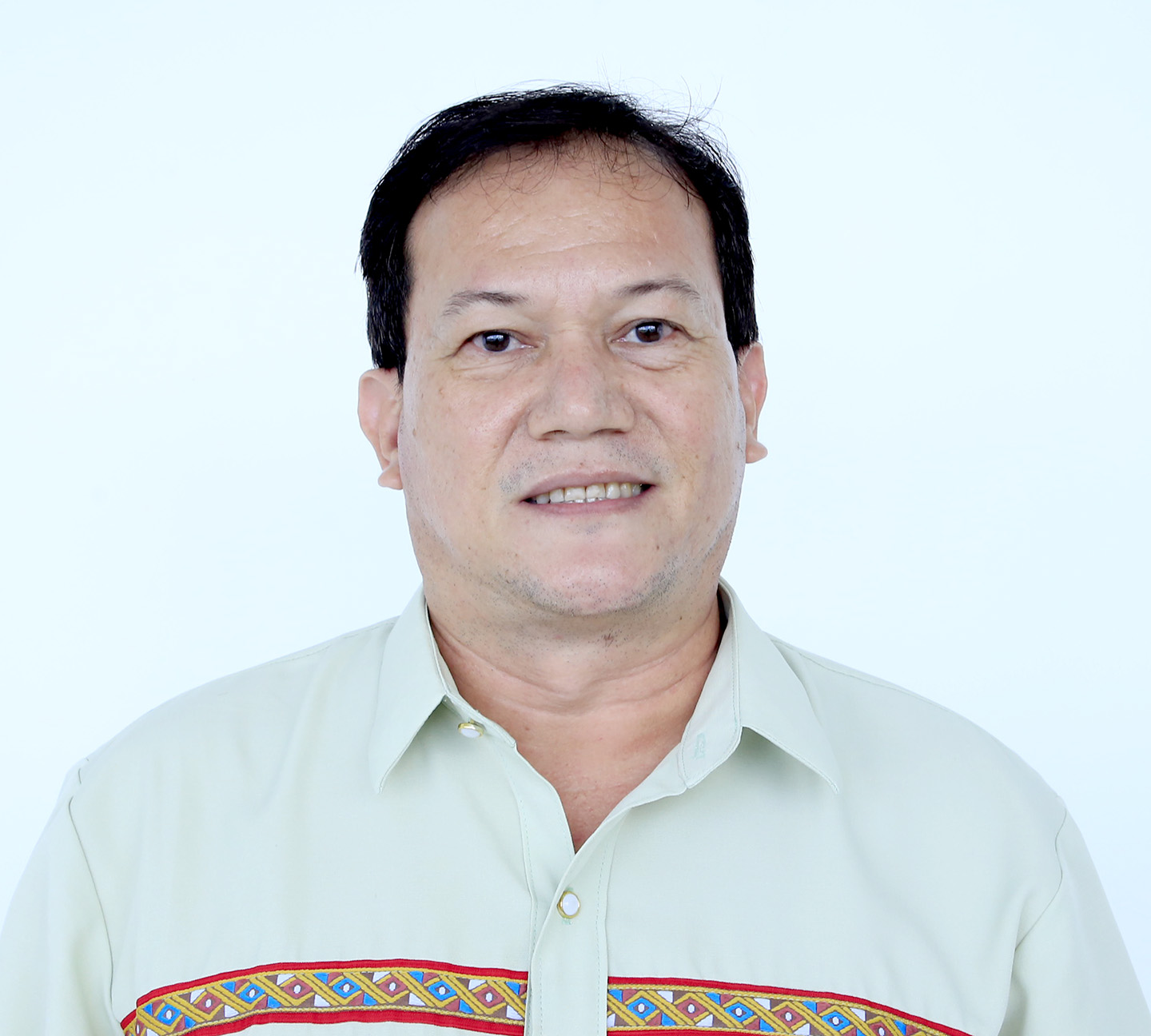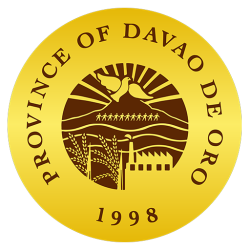The Official Website of the Province of Davao de Oro
- +084 817 0477
- Mon-Friday: 8:00AM to 5:00PM
Close
Book Now
Contact Info
- Provincial Capitol Compound, Brgy. Cabidianan, Nabunturan, Davao de Oro Province, Philippines 8800
- +084 817 0477
- information@davaodeoro.gov.ph

Provincial Disaster Risk Reduction Management Office
Provincial Capitol Ground, Cabidianan, Nabunturan, Davao de Oro
PDRRMO@davaodeoro.gov.ph
VISION
MISSION
MAJOR FINAL OUTPUT
MANDATE FUNCTIONS
PROGRAM, PROJECT & ACTIVITIES
ORGANIZATIONAL STRUCTURE
VISION
By the year 2023 a United, empowered, disaster-resilient and climate change adaptive people of Davao de Oro.
MISSION
Protect the people of Davao de Oro from all hazards through effective disaster risk reduction management and climate change adaptive mechanisms empowered by united and responsive stakeholder.
MAJOR FINAL OUTPUT
1. Reduced/ minimized number of casualties when disaster occur
2. Relocated 50% settlements in identified high risk areas
3. Promote culture of awareness and preparedness among Dabaweños
4. Replenish 30% of the required 60% of the total land area (TLA) forest cover
5. Attained 100% basic hazard-specific response equipments and communication devices.
6. Increased capacity of Dabaweños in preparing for, responding to disasters and adapting to climate change.
7. Integrated DRRM and CCA in local development plans and policies.
8. Institutionalized Disaster Risk Reduction and Management System and Climate Change Adaptation Mechanism.
9. Established effective relief distribution and management system.
10. Established communication systems and protocol
11. Established hazard-based contingency plan, and
12. Improved efficiency in disaster response.
MANDATE FUNCTIONS
The PDRRM Act 2010 mandates the establishment of LDRRMOs in provinces, cities and municipalities, and a Barangay Disaster Risk Reduction and Management Committee (BDRRMC) and shall perform the following functions with impartiality given the emerging challenges brought by disaster of our times:
1. Design, program, and coordinate disaster risk reduction and management activities consistent with National Council’s standards and guidelines;
2. Facilitate and support risk assessments and contingency planning activities at the local level;
3. Consolidate Local Disaster Risk Information which includes natural hazards, vulnerabilities and climate change risks, maintain a local risk map;
4. Organize and conduct training, orientation and knowledge management activities on disaster risk reduction and management at the local level;
5. Operate multi-hazard early warning system, linked to disaster risk reduction to provide accurate and timely advice to national or local emergency response organizations and to the general public, through diverse mass media, particularly radio, landline communications, and technologies for communication within rural communities;
6. Formulate and implement a comprehensive and – integrated framework, policies on disaster risk reduction in close coordination with the local development councils (LDCs);
7. Prepare and submit to the local Sanggunian through the LDRRMC and the LDC the annual LDRRMO Plan and budget, the proposed programming of the LDRRMF, other dedicated disaster risk reduction and management
resources, and other regular funding source/s and budgetary support of the LDRRMO/BDRRMC.
8. Conduct continuous disaster monitoring and mobilize instrumentalities and entities of the LGUs, CSOs, private groups and organized volunteers, to utilize their facilities and resources for the protection and preservation of life
and properties during emergencies in accordance with existing policies and procedures;
9. Identify, assess and manage the hazards vulnerabilities and risks that may occur in their locality;
10. Disseminate information and raise public awareness about those hazards. Vulnerabilities and risks, their nature, effects, early warning signs and counter-measures;
11. Identify and implement cost-effective risk reduction measures/strategies;
PROVINCIAL DISASTER RISK REDUCTION AND MANAGEMENT OFFICE
12. Maintain a database of human resource, equipment, directories, and location of critical infrastructures and their capacities such as hospitals and
evacuation centers;
13. Develop, strengthen and operationalize mechanisms for partnership or networking with the private sector, CSOs, and volunteer groups;
14. Take all necessary steps on a continuing basis to maintain, provide, or arrange the provision of, or to otherwise make available, suitably trained and competent personnel for effective civil defense and disaster risk reduction and management in its area;
15. Organize, train, equip and supervise the local emergency response teams and the ACDV s, ensuring that humanitarian aid workers are equipped with basic skills to assist mothers to breastfeed;
16. Respond to and manage the adverse effects of emergencies and carry out recovery activities in the affected area, ensuring that there is an efficient mechanism for immediate delivery of food, shelter and medical supplies for women and children, endeavor to create a special place where internally- displaced mothers can find help with breastfeeding, feed and care for their babies and give support to each other;
17. Within its area, promote and raise public awareness of and compliance with this Act and legislative provisions relevant to the purpose of this Act;
18. Serve as the secretariat and executive arm of the LDRRMC;
19. Coordinate other disaster risk reduction and management activities;
20. Establish linkage/network with other LGUs for disaster risk reduction and emergency response purposes;
21. Recommend through the LDRRMC the enactment of local ordinances consistent with the requirements of this Act;
22. Implement policies, approved plans and programs of the LDRRMC consistent with the policies and guidelines laid down in this Act;
23. Establish a Provincial/City/Municipal/Barangay Disaster Risk Reduction and Management Operations Center;
24. Prepare and submit, through the LDRRMC and the LDC, the report on the utilization of the LDRRMF and other dedicated disaster risk reduction and management resources to the local Commission on Audit (COA), copy furnished the regional director of the OCD and the Local Government Operations Officer of the DILG; and
25. Act on other matters that may be authorized by the LDRRMC.
PROGRAM, PROJECT & ACTIVITIES
A. DISASTER PREVENTION AND MITIGATION
“Likay ug Pugong sa Katalagman Prevention Program (LPKPP)”
1. Enhancement of Risk Assessment, Mapping and Climate & Disaster Information
2. Review, formulate and harmonized and DRRM-CCA Policies, Plans and Budgets
3. Identify and Acquire/ purchase relocation sites “Kunhod sa Katalagman Mitigation Program (KKMP)”
1. Conduct of inventory, risk assessment, accessibility and gender responsiveness audit of critical infrastructure
2. Development of Integrated Water Resource Management (Flood Control Masterplan)
3. Repair, reinforce, retrofit critical infrastructure (infrastructure mitigating measures against flood, landslide and other hazards)
4. Installation of flood, landslide and road safety Early Warning Devices/ Signages “Environmental Resilience Program (ERP)”
1. Support to Upper Agusan Riverbasin Management and Development Activities Operationalization of 24/7 Emergency and Disaster Operation, Resilience and Resource Center and Davao de Oro Andam Action Centers
– Social Protection (Risk Transfer) Program
– Purchase of Hazard Specific Rescue Tools and Equipment
– Purchase of Emergency Response Vehicles
– Support to Repair and Maintenance of Equipment Used for Disaster Projects
– IGMAT Early Warning System Program (I-EWSP)
1. Installation of EWS Monitoring Center
2. Installation of end-to-end and multi-hazard Early Warning System
B. DISASTER PREPAREDNESS
Conduct/ Attend Disaster related Trainings, Seminars, Workshops, and
Fora integrating Gender concerns
Conduct/ attend meetings, fora, and conferences on DRR/CCA and related activities for PDRRM Council, MDRR Officers, Thematic Area Committees and Crisis Management Committees
IEC on Hazard-specific Disaster Preparedness and Readiness Programs
Prepositioning/ Stockpiling of Food, Non-food Items and Hygiene Kits to affected families of disaster and calamities
Repair and Maintenance of Rescue Tools and Equipment
Health Resilience Program (HRP)
Support to Water, Sanitation and Hygiene (WASH) in Emergency
Support to Emerging and Re-Emerging Infectious Diseases
Preparedness and Prevention Measures
C. DISASTER RESPONSE AND EARLY RECOVERY
DdO- “AKSYON”- RESPONSE and EARLY RECOVERY PROGRAMS
(DdO- ARERPro):
Activation of Incident Command System and Emergency
Operation Centers
Activation of Forecast-Based Early Actions (Forecast-based Financing)
ORGANIZATIONAL STRUCTURE
OFFICIAL MESSAGE OF THE DEPARTMENT HEAD
“Get ready, be prepared, you and all the hordes gathered about you, and take
command of them”
Ezekiel 38:7
Davao de Oro is not spared from natural and human-induced hazards. Typhoon Pablo (Bopha) has left behind not only devastation and pain amongst those directly or indirectly affected, but it has engraved in our hearts and minds with humongous lessons to lived by. Lessons applied not only during times of disasters, but in calm moments where there are no emergencies or disasters.
The Provincial Disaster Risk Reduction Management Office (PDRRMO) is committed to deliver its services to the people of Davao de Oro. We envisioned a united, empowered, responsive, disaster-resilient and climate change adaptive local communities in the province through various Knowledge, Skills and Attitude enhancement and capacity building activities.
The PDRRMO will strive to enhance and keep raising the bar higher and higher in addressing the needs of the most vulnerable children, women, persons with disabilities and elderly, during emergencies and disasters and even in normal times. PDRRMO as mandated by RA 10121, will anchor on the four (4) thematic pillars of Disaster Risk Reduction and Management (DRRM) namely: Disaster Prevention and Mitigation; Disaster Preparedness; Disaster Response and Early Recovery; and Disaster Rehabilitation and Recovery and aligned with recognized and established standards, policies, rules and regulations governing DRRM in the Philippines.
We will continue to develop our people in the various divisions/sections or units, Administration and Training; Operations and Warning; Research and Planning; and the Administrative Support Services Unit upholding its mission to “Protect the Dabaweños from all hazards through effective disaster risk reduction management and climate change adaptation mechanisms empowered by united and responsive stakeholders”.
We will practice our CORE VALUES of Innovation, Initiative, Teamwork, Creativity, Resilience, Competitiveness, and Passionate public service.
Ezekiel 38:7
Davao de Oro is not spared from natural and human-induced hazards. Typhoon Pablo (Bopha) has left behind not only devastation and pain amongst those directly or indirectly affected, but it has engraved in our hearts and minds with humongous lessons to lived by. Lessons applied not only during times of disasters, but in calm moments where there are no emergencies or disasters.
The Provincial Disaster Risk Reduction Management Office (PDRRMO) is committed to deliver its services to the people of Davao de Oro. We envisioned a united, empowered, responsive, disaster-resilient and climate change adaptive local communities in the province through various Knowledge, Skills and Attitude enhancement and capacity building activities.
The PDRRMO will strive to enhance and keep raising the bar higher and higher in addressing the needs of the most vulnerable children, women, persons with disabilities and elderly, during emergencies and disasters and even in normal times. PDRRMO as mandated by RA 10121, will anchor on the four (4) thematic pillars of Disaster Risk Reduction and Management (DRRM) namely: Disaster Prevention and Mitigation; Disaster Preparedness; Disaster Response and Early Recovery; and Disaster Rehabilitation and Recovery and aligned with recognized and established standards, policies, rules and regulations governing DRRM in the Philippines.
We will continue to develop our people in the various divisions/sections or units, Administration and Training; Operations and Warning; Research and Planning; and the Administrative Support Services Unit upholding its mission to “Protect the Dabaweños from all hazards through effective disaster risk reduction management and climate change adaptation mechanisms empowered by united and responsive stakeholders”.
We will practice our CORE VALUES of Innovation, Initiative, Teamwork, Creativity, Resilience, Competitiveness, and Passionate public service.

JOSEPH RANDY M. LOY
Provincial Disaster Risk Reduction Management Officer


